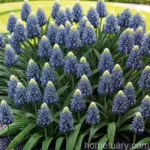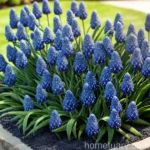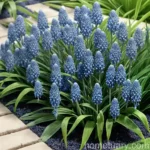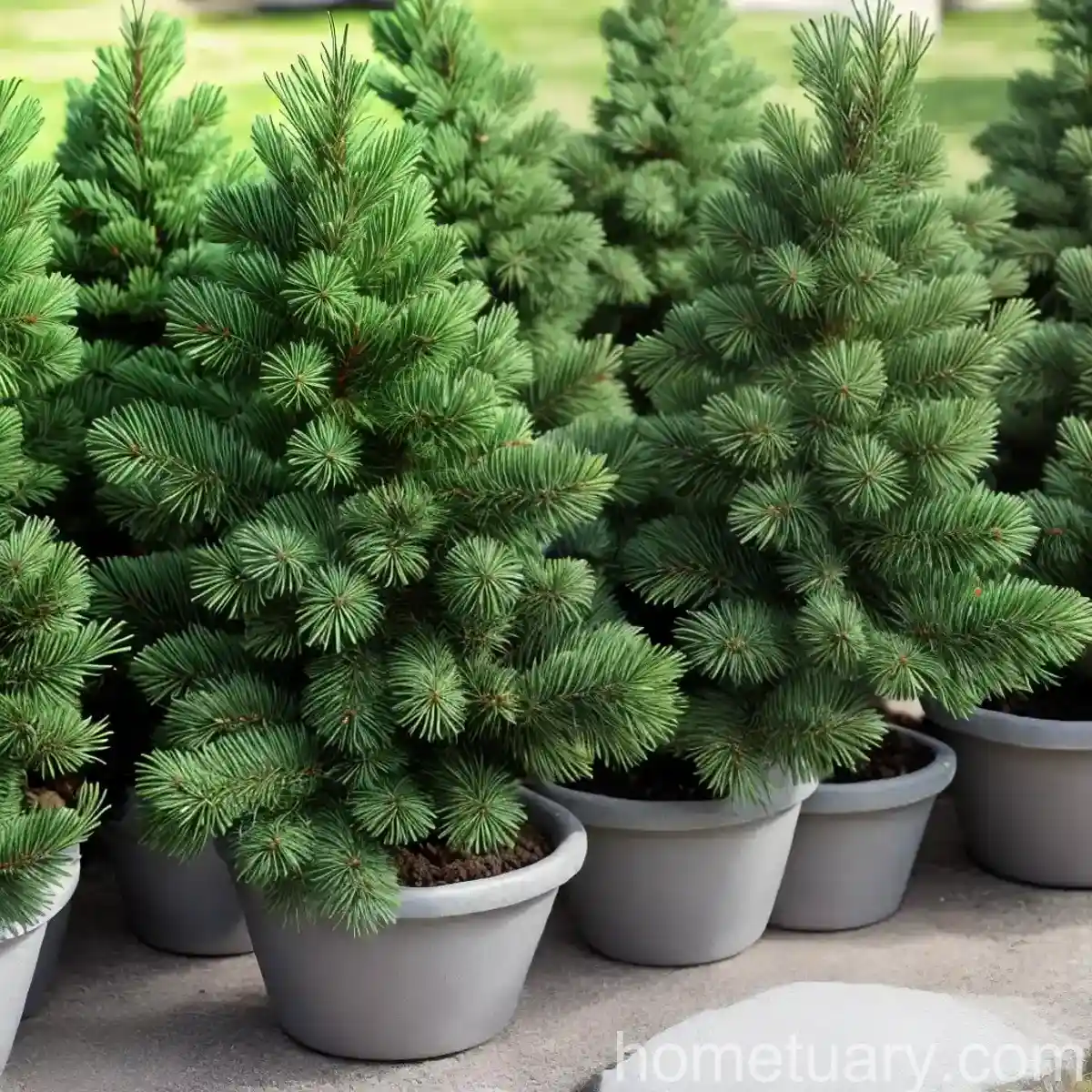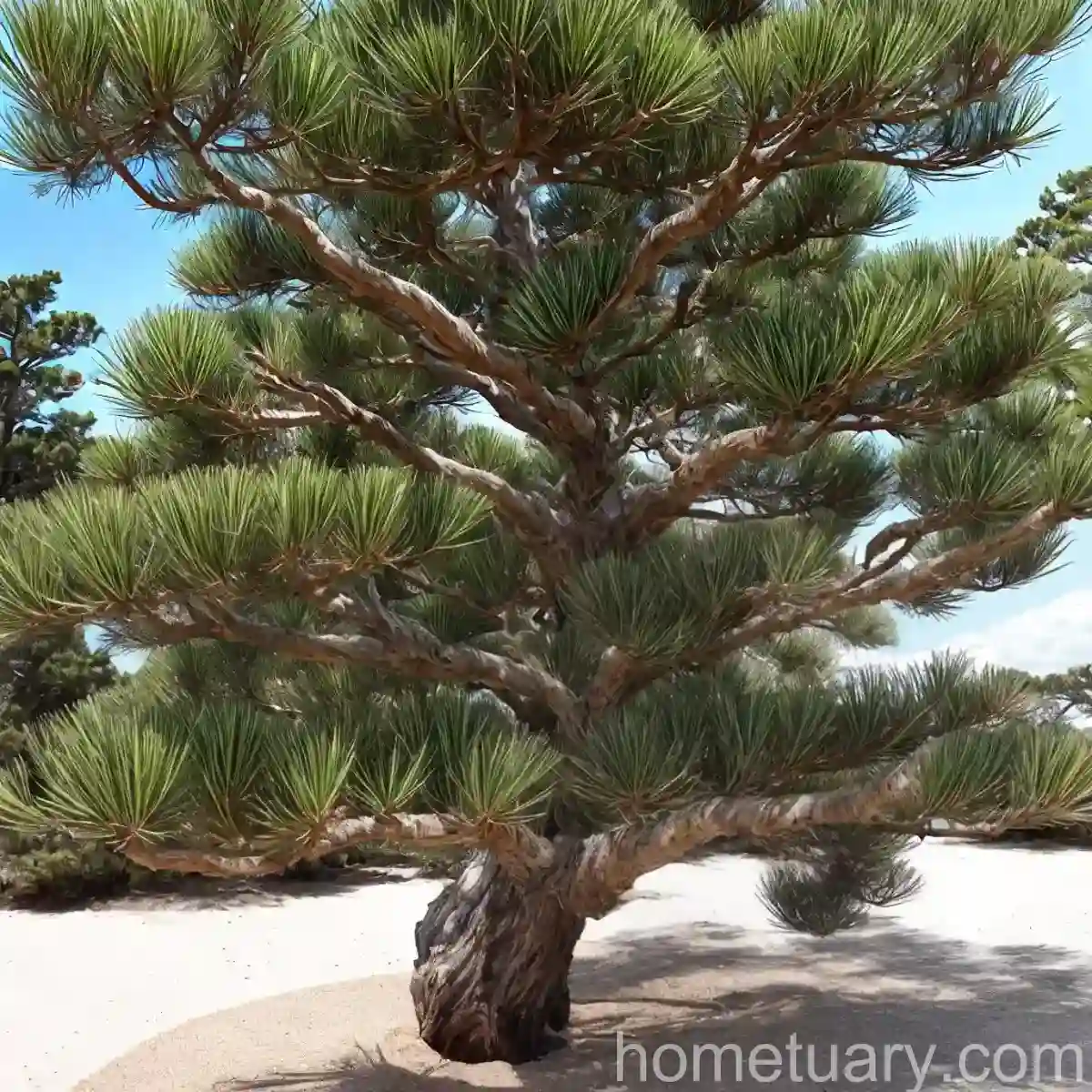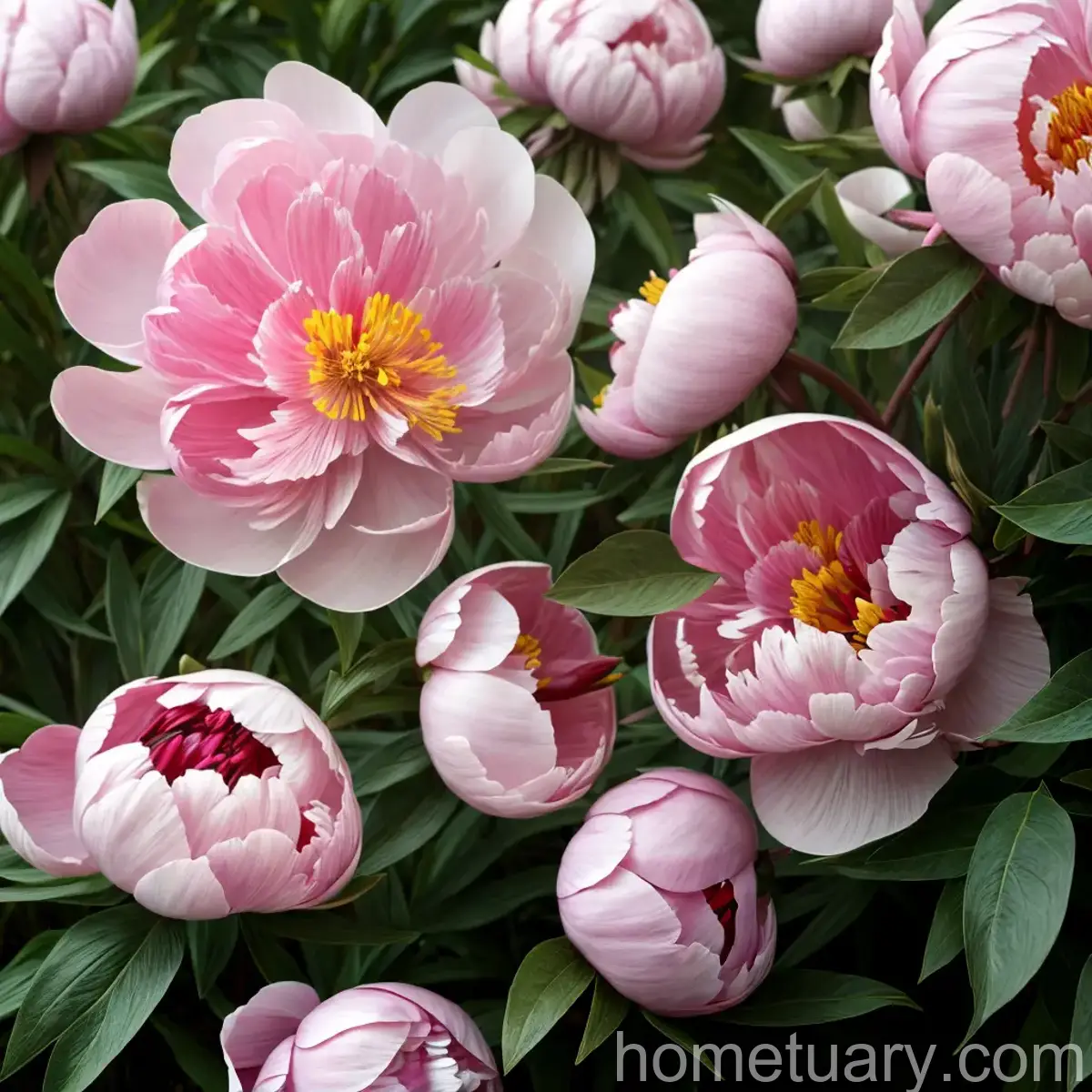Lily Turf (Liriope muscari ‘Variegata’): A Comprehensive Guide
Lily turf, also known as Liriope muscari ‘Variegata,’ is a versatile and popular plant that can be used for various landscaping purposes, from ground cover to container planting. In this comprehensive guide, we will delve into the various aspects of lily turf, including its culture, uses, care, and maintenance, while also exploring its common diseases and pests. Whether you are a gardening enthusiast, a landscaper, or just someone interested in learning about ornamental plants, this guide will provide you with valuable insights into the world of lily turf.
What is Lily Turf (Liriope muscari ‘Variegata’)?
Lily turf (Liriope muscari ‘Variegata’) is a perennial, evergreen plant that belongs to the Asparagaceae family. Native to East Asia, including China, Japan, and Taiwan, it is known for its attractive and variegated foliage, making it a popular choice for ornamental landscaping. This plant is characterized by its clumping, grass-like leaves and delicate, violet-hued flowers that bloom on upright spikes in late summer to early fall. The variegated form of lily turf features leaves adorned with creamy white or yellow margins, adding a touch of elegance to its appearance.
With its adaptability to various growing conditions and its low maintenance requirements, lily turf has become a favored choice for gardeners and landscapers looking to add color, texture, and form to their outdoor spaces.
Key Takeaways – Lily Turf (Liriope muscari ‘Variegata’)
Before delving into the specific aspects of lily turf, let’s explore some key takeaways about this versatile plant:
- Botanical Name: Liriope muscari ‘Variegata’
- Common Name: Lily turf
- Plant Type: Perennial, evergreen
- Foliage: Variegated, grass-like leaves
- Flowers: Delicate, violet-hued flowers on upright spikes
- Uses: Ground cover, border planting, container planting, erosion control
- Growth Conditions: Adaptable to various light and soil conditions
- Maintenance: Low maintenance, regular watering, occasional fertilization
- Pests and Diseases: Generally resistant to pests and diseases
Now, let’s dive deeper into the various aspects of lily turf, covering its culture, uses, care, and maintenance, as well as tips for propagation and container planting.
Culture
Understanding the cultural requirements of lily turf is essential for its successful growth and development. From its preferred soil conditions to its tolerance for different light exposures, getting the culture right is key to maximizing the potential of this ornamental plant.
Soil
Lily turf thrives in well-draining, slightly acidic to neutral soil. However, it is adaptable and can tolerate a range of soil types, including clay, loam, and sandy soils. The key is to ensure good drainage to prevent waterlogging, which can lead to root rot and other issues.
Water
While lily turf is relatively drought-tolerant once established, regular watering is essential, especially during periods of prolonged dryness. When caring for lily turf, it’s important to provide consistent moisture, particularly during the hot summer months. However, it is crucial to avoid overwatering, as excessive moisture can lead to fungal diseases and other problems.
Sunlight
Lily turf is known for its versatility when it comes to light exposure. It can thrive in both full sun and partial shade, making it a suitable choice for a wide range of garden settings. In regions with hot, intense sunlight, providing some afternoon shade can help prevent leaf scorch and maintain the plant’s vigor and appearance.
Fertilizer
While lily turf is not particularly demanding when it comes to fertilization, applying a balanced, slow-release fertilizer in spring can promote healthy growth and flowering. Additionally, a layer of organic mulch around the base of the plant can help conserve moisture, regulate soil temperature, and provide a steady supply of nutrients as it decomposes.
Uses
Lily turf offers a multitude of uses in landscaping, thanks to its attractive foliage, adaptability, and low maintenance requirements. Here are some common applications of lily turf in outdoor spaces:
- Ground Cover: Its dense, spreading growth habit makes lily turf an excellent ground cover, particularly in shaded or partially shaded areas where other plants may struggle to thrive.
- Border Planting: The variegated foliage of lily turf adds visual interest to borders and edging, providing a striking contrast to other plants in the landscape.
- Container Planting: Lily turf is well-suited for container planting, whether in pots, planters, or hanging baskets, adding a touch of greenery and texture to patios, balconies, and outdoor living spaces.
- Erosion Control: With its dense root system and low-growing habit, lily turf is effective in preventing soil erosion on banks, slopes, and embankments.
- Shade Gardens: Its tolerance for shade makes lily turf an ideal choice for shaded gardens, where it can brighten up dimly lit areas with its variegated leaves and delicate blooms.
Pruning
Minimal pruning is required for lily turf, making it a low-maintenance addition to the garden. However, to keep the plant looking neat and tidy, it is advisable to trim back any damaged or yellowing leaves as needed. Additionally, removing spent flower spikes can help redirect the plant’s energy into new growth and maintain its overall appearance.
Propagation
Lily turf can be propagated through division, making it an economical way to expand your plant collection or share it with fellow gardening enthusiasts. The best time to divide lily turf is in early spring before new growth appears or in early fall when the weather begins to cool. Here’s a simple guide to propagating lily turf through division:
-
Prepare the Plant: Water the lily turf thoroughly a day or two before dividing to ensure the soil is moist, making it easier to separate the roots.
-
Dig and Divide: Carefully dig up the clump of lily turf, trying to disturb the roots as little as possible. Use a sharp, clean garden spade to divide the clump into smaller sections, each with a healthy root system and several tufts of foliage.
-
Replant: Replant the divided sections at the same depth as the original plant, spacing them at the desired intervals. Water the newly divided lily turf to help the roots establish in their new location.
-
Maintenance: Keep the soil consistently moist while the divided plants establish themselves, and avoid disturbing the newly planted sections for the first few weeks to allow for root development.
Container Planting
Lily turf is well-suited for container planting, offering an easy and versatile way to incorporate this ornamental plant into various outdoor settings. Whether you’re looking to add greenery to a balcony, patio, or deck, lily turf can thrive in containers, provided its basic growing requirements are met.
Container Selection
When choosing a container for lily turf, opt for a spacious pot with adequate drainage holes to prevent waterlogging. Consider the mature size of the plant and select a container that allows for proper root development and growth. Additionally, lightweight containers made from materials such as fiberglass or resin can make it easier to move the plant as needed.
Soil and Planting
Use a high-quality, well-draining potting mix when planting lily turf in containers. A mix formulated for outdoor container plants can provide the necessary balance of moisture retention and aeration. Plant the lily turf at the same depth as it was previously growing, and water it thoroughly after planting to help settle the soil and initiate root establishment.
Watering and Maintenance
Container-grown lily turf may require more frequent watering than those planted in the ground, especially during hot, dry periods. Check the moisture level of the soil regularly, and water the plant when the top inch of the soil feels dry to the touch. Additionally, a balanced, water-soluble fertilizer can be applied to container-grown lily turf according to the manufacturer’s instructions to support healthy growth and flowering.
With its adaptability and decorative appeal, lily turf can thrive in containers, whether as a standalone specimen or as part of a mixed planting arrangement.
Popularity
Lily turf, particularly the variegated variety (Liriope muscari ‘Variegata’), has gained popularity among gardeners and landscapers for its versatility and aesthetic appeal. Its lush, variegated foliage and tolerance for various growing conditions make it a sought-after choice for adding texture, color, and form to outdoor spaces.
Landscaping Applications
From residential gardens to commercial landscapes, lily turf finds wide-ranging applications in landscaping. Its ability to thrive in shaded areas, along with its low maintenance requirements, has made it a favored option for ground cover, border planting, and edging. The variegated leaves of ‘Variegata’ add visual interest and can serve as a striking backdrop for other plants.
Container Gardens
Lily turf’s adaptability for container planting has also contributed to its popularity, allowing it to be incorporated into a wide range of outdoor settings, such as urban balconies, patios, and rooftop gardens. Its low-growing, clumping habit makes it suitable for filling in planters and adding greenery to outdoor living spaces.
Municipal Plantings
In parks, public gardens, and roadside landscaping, lily turf is often used for its erosion control properties, its ability to thrive under tree canopies, and its capacity to naturalize in various environmental conditions. Its low foot traffic tolerance and resistance to pests and diseases make it an ideal choice for municipal plantings.
Common Diseases
Lily turf is generally resistant to pests and diseases, making it a low-maintenance option for ornamental landscaping. However, as with any plant, it can occasionally face issues that may affect its health and appearance. Understanding common diseases and their preventive measures is essential for maintaining the vigor of lily turf in the garden.
Anthracnose
Anthracnose is a fungal disease that can affect lily turf, causing dark, sunken lesions on the leaves and stems. To prevent anthracnose, ensure good air circulation around the plants, avoid overhead watering, and promptly remove and dispose of any infected plant material. Fungicidal sprays may be necessary for severe infestations.
Root Rot
Excessive soil moisture and poor drainage can lead to root rot in lily turf, manifesting as wilting, yellowing leaves and stunted growth. To prevent root rot, ensure proper soil drainage, avoid overwatering, and remove any affected plants to prevent the spread of the disease.
Leaf Spot
Leaf spot diseases, caused by various fungal pathogens, can result in the development of brown or black spots on lily turf leaves. To prevent leaf spot, provide adequate spacing between plants for air circulation, water at the base of the plants to keep foliage dry, and remove any affected leaves to reduce the chances of the disease spreading.
By maintaining good cultural practices, regular monitoring, and addressing issues promptly, the incidence of diseases in lily turf can be minimized, allowing the plants to thrive in the landscape.
Disease Diagnosis
When diagnosing diseases in lily turf, it’s essential to closely observe the symptoms and assess the growing conditions to determine the underlying cause of the issue. Here are some key steps for diagnosing and addressing diseases in lily turf:
-
Symptom Observation: Take note of any changes in the appearance of the plant, such as leaf discoloration, wilting, or unusual growth patterns.
-
Cultural Assessment: Evaluate the cultural conditions, including soil moisture, light exposure, and air circulation, to identify any factors that may be contributing to the disease.
-
Pathogen Identification: If possible, examine the affected plant material for signs of fungal or bacterial pathogens, such as spores, lesions, or mycelium.
-
Treatment Options: Based on the diagnosis, implement appropriate treatment measures, such as adjusting watering practices, improving soil drainage, or using targeted fungicidal treatments as needed.
-
Preventive Measures: Once the disease has been addressed, focus on preventive measures, such as maintaining plant health, practicing good sanitation, and monitoring for early signs of disease recurrence.
By being proactive in disease diagnosis and management, gardeners and landscapers can help maintain the health and aesthetics of lily turf in the landscape.
Common Pests
Though generally resistant to pest infestations, lily turf may encounter occasional issues with certain insects. Understanding the common pests that may affect lily turf and implementing appropriate control measures can help protect the plants from damage and stress.
Spider Mites
Spider mites are tiny arachnids that can infest lily turf, sucking sap from the leaves and causing stippling, discoloration, and webbing on the foliage. To control spider mites, use a strong blast of water to dislodge them from the plants, or apply insecticidal soaps or horticultural oils to manage infestations.
Aphids
Aphids are small, soft-bodied insects that may feed on lily turf, particularly on new growth, causing distorted leaves and the buildup of honeydew. Natural predators, such as ladybugs and lacewings, can help keep aphid populations in check, or insecticidal sprays can be used if necessary.
Snails and Slugs
In damp, shaded areas, snails and slugs may feed on lily turf, leaving behind ragged holes and slime trails. Handpicking these pests, using barriers, such as copper tape, or applying iron phosphate baits can help manage snail and slug populations in the garden.
By remaining vigilant and inspecting lily turf for signs of pest activity, gardeners can take proactive measures to protect the plants from potential damage.
Botanist’s Tips
As a plant scientist with a passion for ornamental plants, I would like to share some botanist’s tips for growing and caring for lily turf. These tips are based on both scientific knowledge and practical experience and can help gardeners and landscapers optimize the performance and aesthetics of lily turf in the landscape.
Tip 1: Site Selection
When choosing a location for planting lily turf, consider the light exposure, soil conditions, and the surrounding landscape. While lily turf is adaptable, providing ideal growing conditions can help the plants thrive and reach their full potential.
Tip 2: Mulching
Applying a layer of organic mulch around lily turf can provide numerous benefits, including moisture retention, weed suppression, and soil temperature regulation. It also contributes to the overall aesthetics of the planting area.
Tip 3: Seasonal Maintenance
Regular maintenance tasks, such as removing spent flower spikes, trimming back damaged foliage, and dividing overgrown clumps, can help keep lily turf looking neat and healthy throughout the growing season.
Tip 4: Companion Planting
Consider incorporating companion plants that complement the colors and textures of lily turf, such as shade-loving perennials, ferns, and flowering bulbs. When planted together, they can create harmonious and visually appealing combinations in the landscape.
Tip 5: Wildlife Benefits
Lily turf’s flowers can attract pollinators such as bees and butterflies, contributing to the overall biodiversity of the garden. By incorporating lily turf into wildlife-friendly plantings, you can support local ecosystems and beneficial insect populations.
By applying these botanist’s tips, gardeners can enhance the health, aesthetics, and ecological value of lily turf in their outdoor spaces, creating an inviting and visually engaging landscape.
Fun Facts
To add a touch of intrigue and fascination, here are some fun facts about lily turf that showcase its unique characteristics and contributions to the natural world:
-
The genus name “Liriope” is derived from the name of a nymph in Greek mythology, known for her beauty and purity, reflecting the graceful and ornamental nature of the plant.
-
Lily turf is a versatile plant, equally at home in traditional woodland gardens, modern urban landscapes, and everything in between, showcasing its adaptability and decorative appeal.
-
In addition to its aesthetic value, lily turf’s dense, clumping habit and fibrous roots make it an effective plant for stabilizing soil on slopes and preventing erosion.
-
The variegated form of lily turf, Liriope muscari ‘Variegata,’ can add a luminous, light-reflective quality to shaded areas, brightening up dark corners of the garden.
-
Lily turf is not actually a member of the Liliaceae family, despite its common name; instead, it belongs to the Asparagaceae family, which includes a diverse array of ornamental and culinary plants.
By discovering these fun facts about lily turf, we can deepen our appreciation for this versatile and graceful plant, recognizing its unique qualities and contributions to the natural world.
Links to External Resources
For further information and resources on lily turf, here are some recommended links to external sources, including reputable gardening websites, botanical gardens, and academic publications:
-
The Royal Horticultural Society (RHS): The RHS website provides valuable information on lily turf, including cultivation tips, plant care guides, and practical advice for gardeners.
-
Missouri Botanical Garden: The Missouri Botanical Garden offers an array of botanical resources, plant profiles, and educational materials related to lily turf and other ornamental plants.
-
University Extension Publications: Many university extension programs offer publications and fact sheets on ornamental plant care, including lily turf, providing science-based advice for gardeners and landscapers.
-
Journal of the American Society for Horticultural Science: Academic journals such as JASHS publish research articles on topics related to ornamental horticulture, plant physiology, and landscape design, offering in-depth insights for plant scientists and professionals.
-
Botanical Magazine and Journals: Botanical magazines and journals, available through digital libraries and academic databases, often feature articles on plant varieties, cultivation techniques, and emerging trends in ornamental gardening.
By exploring these external resources, readers can access additional information, expert advice, and scientific knowledge pertaining to lily turf, enriching their understanding of this beloved ornamental plant.
Conclusion
Lily turf, specifically the variegated form Liriope muscari ‘Variegata,’ is a plant of enduring charm, equipping gardens and landscapes with its graceful foliage, delicate flowers, and versatile applications. Whether as a ground cover in shaded woodlands, a container specimen in urban settings, or an erosion-controlling presence in naturalistic plantings, lily turf exemplifies adaptability, durability, and decorative appeal.
By understanding the cultural requirements, uses, care and maintenance, disease and pest management, and the unique attributes of lily turf, gardeners and landscapers can harness the full potential of this ornamental plant, creating visually captivating and ecologically beneficial outdoor spaces.
Through this comprehensive guide, we have ventured into the captivating world of lily turf, delving into its multifaceted nature and the valuable role it plays in ornamental horticulture. With a rich tapestry of insights, practical advice, and botanical knowledge, we hope to inspire a deeper appreciation for lily turf and its enduring presence in gardens and landscapes worldwide





